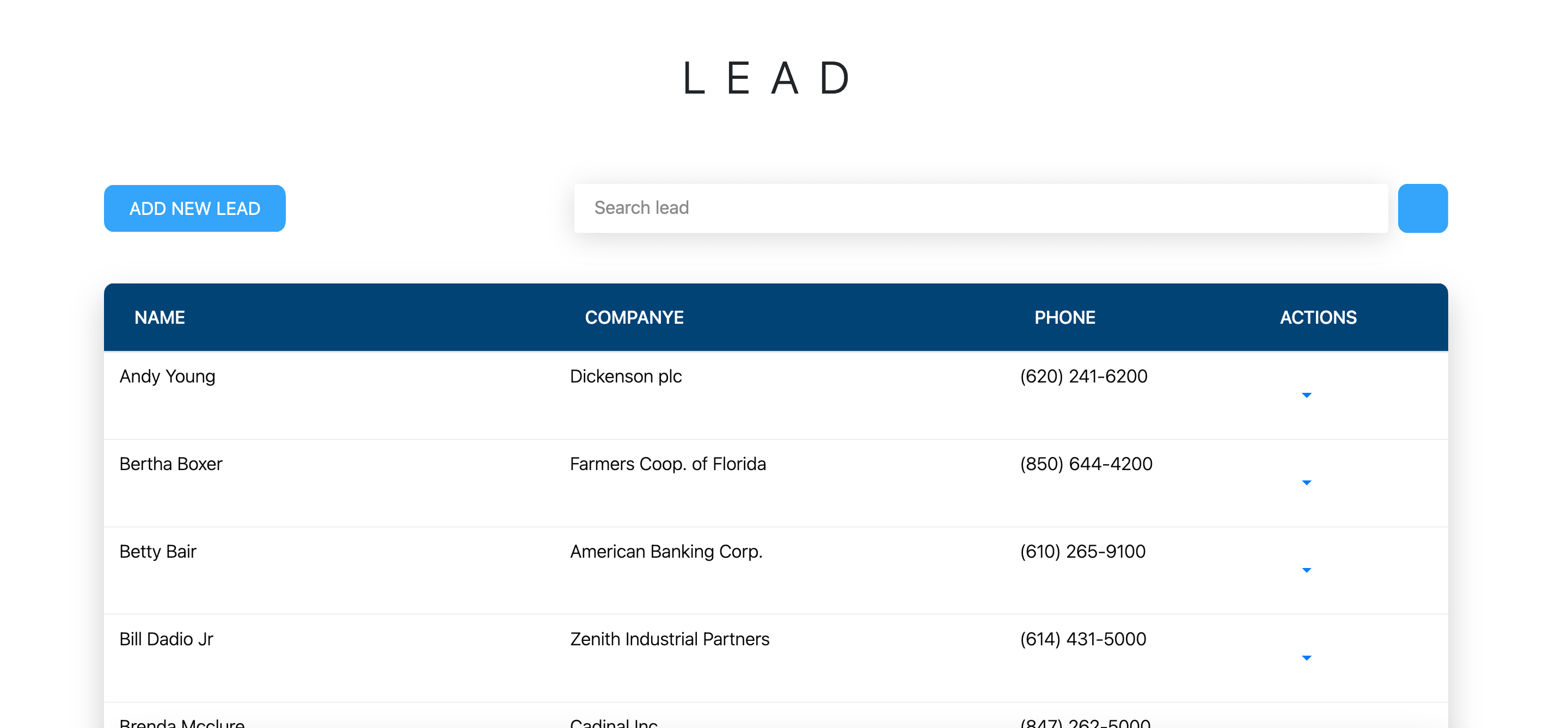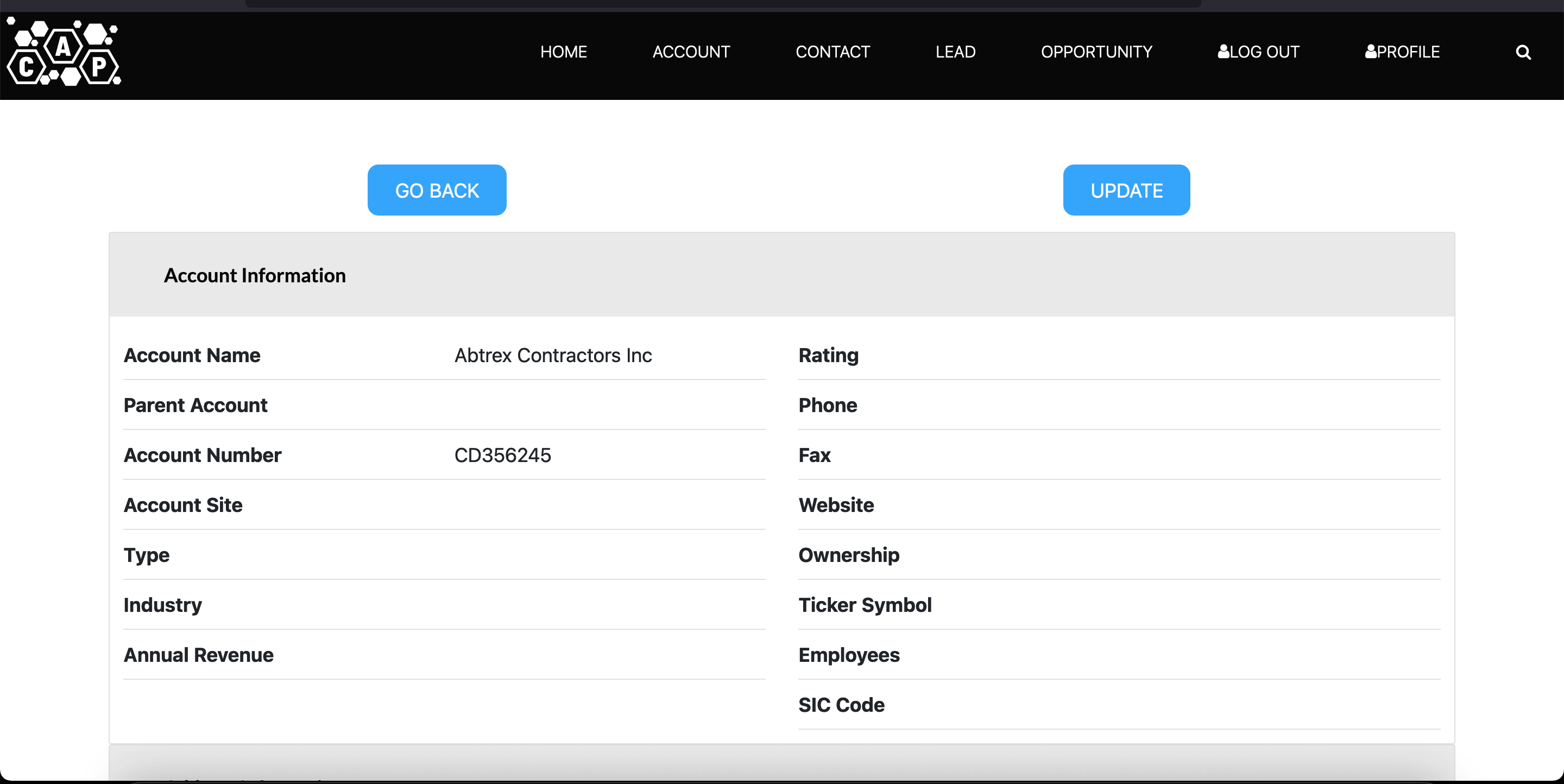cap-sfcore
v1.1.14
Published
CRUD for SalesForce objects
Downloads
87
Readme
cap-sfcore 
cap-sfcore is a module CRUD for Angular focused for generic SalesForce objects, such as the following.
- Account
- Contact
- Lead
- Opportunity
Previous requirements
In order for your CRUD to work, you must have your own authentication module or use a cap product as cap-authentication and configure an Auth0 server. When installing this module, you must have @auth0/angular-jwt installed to decrypt the user token.
npm i @auth0/angular-jwt --savecap-sfcore use bootstrap's classes, You can use a CAP product (cap-angular-schematic-bootstrap) to configure and install bootstrap to your project the installation is as follows.
ng add cap-angular-schematic-bootstrap@latest 4.0.0 true
you need to add ngx-pagination to the object listing page
npm i ngx-pagination --save you also need to install uuid to generate universal unique identifiers for your records since salesForce accepts that fromato of id.
npm i uuid --save Finally, you also have to install sweetalert2 for some security animations and alerts that will appear when creating a record or also when deleting and confirming the deletion of the record.
npm i sweetalert2 --save Installation
npm i cap-sfcoreImplementation into a module
To use this module go to the app.module.ts and into the section import and put the cap-sfcore module.
import { CapSalesForceCore } from 'cap-sfcore'into the import section
@NgModule({
imports: [
CapSalesForceCore.forRoot({
endPoint: '<your endPoint API>'
})
],
})
export class AppModule { }configure routing
Within our angular project we will have a file called app-routin.module.ts or in another way, there goes the routing of the components. Now we will modify the routes variable that has defined the routes of the components to have it as follows.
// e.g. import { IndexComponent } from './index/index.component';
const routes: Routes = [
{path: ':object', component: <your index component>},
// e.g. {path: ':object', component: IndexComponent},
{path: 'account/create', component: AccountComponent},
{path: 'account/:id', component: AccountComponent},
{path: 'contact/create', component: ContactComponent},
{path: 'contact/:id', component: ContactComponent},
{path: 'lead/create', component: LeadComponent},
{path: 'lead/:id', component: LeadComponent},
{path: 'opportunity/create', component: OpportunityComponent},
{path: 'opportunity/:id', component: OpportunityComponent}
];
@NgModule({
imports: [RouterModule.forChild(routes)],
exports: [RouterModule]
})
export class AppRoutingModule {}In the components that you defined of each object will go the selectors (tags) that will render the content of each object, within each one the CRUD can be done.
HTML tags
- Objects List => IndexComponent
<app-index-sf></app-index-sf>- Account CRUD => AccountComponent
<app-account-sf></app-account-sf>- Contact CRUD => ContactComponent
<app-contact-sf></app-contact-sf>- Lead CRUD => LeadComponent
<app-lead-sf></app-lead-sf>- Opportunity CRUD => OpportunityComponent
<app-opportunity-sf></app-opportunity-sf>Styles
Here we leave some styles already predefined for your application and this package to look cool. You only need to add these files in your application /assets/scss and import the main.scss file in your src/styles.scss file in the following way:
@import '. /assets/scss/main.scss';You can also do it automatically by calling a schematic for Angular as follows:
ng add cap-angular-schematic-responsive <App title> false false false

